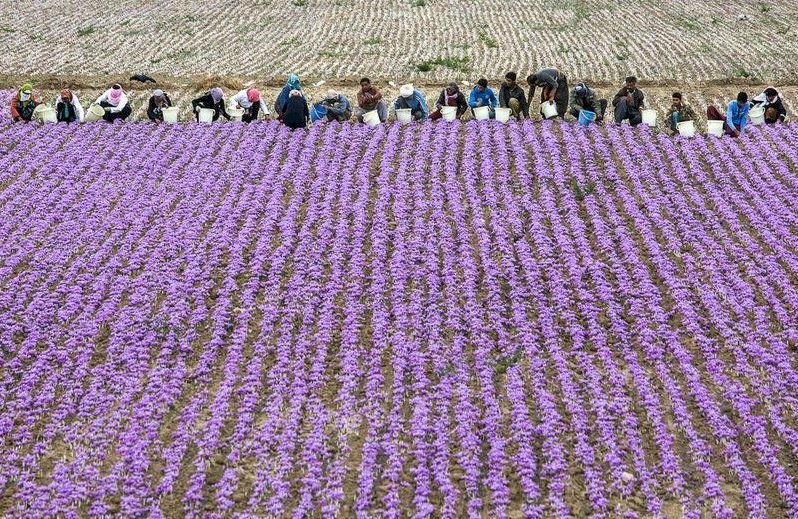First agritourism permit issued in northeast Iran

TEHRAN – The first-ever agritourism permit has been issued to a farm in Torbat-e Heydarieh and Zaveh county, the northeastern Khorasan Razavi province.
The agritourism permit has been issued for a vast saffron farm covering an area of 70 hectares, a local tourism official has said.
In this county, saffron cultivation is at its highest level in the country and even in the world, making it well known as a saffron hub, Ali Mohammadi explained on Friday.
Therefore, agritourism is one of the opportunities and capabilities of tourism in this region, the official added.
Saffron plays an important role in the economy of the region, as well as allowing tourists to get a taste of how it is harvested and be able to purchase the souvenirs of freshly harvested produce, he mentioned.
Such permits are granted to eligible farm owners in the country to launch their agritourism businesses, aiming to set certain standards in a move to ensure the quality of such services in the country.
Known as the “red gold”, saffron is a magical ingredient in Persian culture, from aromatic foods and colorful desserts to physical and spiritual medicine. Every year, the saffron harvest season begins in early November. While most other vegetation is gone, the bright purple flowers cover the fields and create an outstanding landscape in dry regions in Iran.
Major saffron producers of Iran are located on the east side of the country. If you would like to see the biggest market, head to Mashhad, which is also known for its religious importance.
So far 450 historical structures have been identified in Torbat-e Heydarieh and Zaveh county -located 180 kilometers from the provincial capital of Mashhad- of which 80 properties have been inscribed on the National Heritage list.
Over the past couple of years, Torbat-e Heydarieh and its surroundings have yielded traces of the ancient settlements. Last year, an archaeological site was exposed on the outskirts of Torbat-e Heydarieh after torrential rains washed the soil away. The site was accessed dates back to the early and middle Islamic eras, according to preliminary studies carried out by the cultural heritage experts.
According to archaeological studies, Torbat-e Heydarieh is home to several historical caves due to its favorable habitat conditions and traces of habitation from about 40,000 years have been identified in the caves of the region. The history of the area stretches back to the Achaemenian Empire from the 6th to 4th century BC and the Parthian Empire from the 3rd century BC to the 3rd century CE.
Agritourism is one of the newest forms of tourism with a direct and strong link to rural life, and by using these activities a region can witness sustainable development, he noted.
Agritourism is a relatively new branch of the travel industry in which tourists stay with local people in rural areas. Farm/ranch recreation refers to activities conducted on private agricultural lands, which might include fee-hunting and fishing, overnight stays, educational activities, etc.
Experts believe that in addition to the customer services jobs, agritourism pays special attention to the production sector, saying agricultural tourism is much more important and practical than other branches of tourism because it creates a new chain and diversity in the field of production and services.
Agritourism and nature-tourism enterprises might include outdoor recreation (fishing, hunting, wildlife study, horseback riding), educational experiences (cannery tours, cooking classes, or tea or coffee tasting), entertainment (harvest festivals or barn dances), hospitality services (farm stays, guided tours, or outfitter services), and on-farm direct sales (u-pick operations or roadside stands).
Agritourism is a subset of a larger industry called rural tourism that includes resorts, off-site farmers' markets, non-profit agricultural tours, and other leisure and hospitality businesses that attract visitors to the countryside.
ABU/AFM
